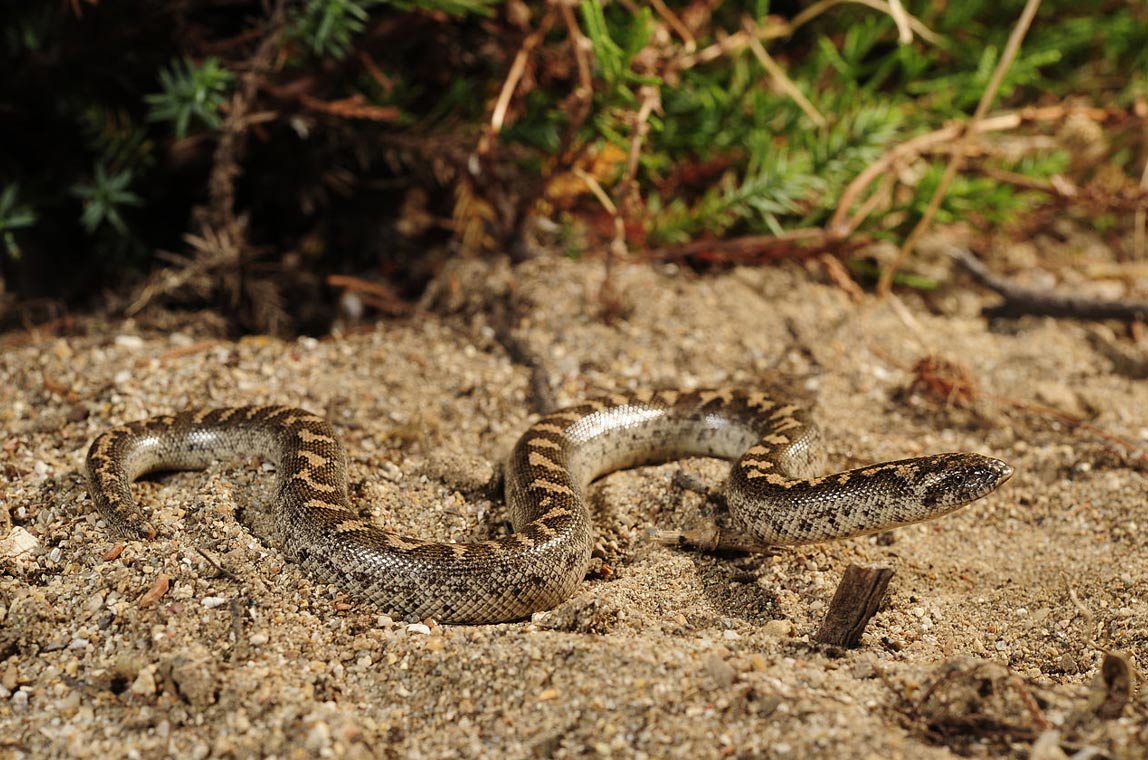It can come as no surprise to you that the ancient Hellenes were often at war. In fact, it was quite common for ancient Hellenic city-states to go to war against each other. For their naval battles, the ancient Hellenes built huge war ships called triremes. A trireme was rowed bij 170 oarsmen, three rows per side, who were either poor citizens or dolos--slaves. A trireme would try to sink an enemy ship by ramming it from the side with its bronze nose. Alternative, they would sail past and allow the soldiers to throw spears at their enemy. Sometimes, however, they threw pots filled with burning liquids, or even poisenous snakes. This species of snake, the Javelin Sand Boa, has recently been rediscovered on Sicily, or so the Telegraph reports.
The Telegraph and many other news outlets make this statement based on a short rapport published in in the journal Acta Herpetologica. The Javelin Sand Boa had not been officially recorded in Italy for 80 years, but sightings by locals suggested that it might still survive in a region of Sicily. Snake experts decided to investigate and found the species, officially known as Eryx jaculus, living in an area of sand dunes and woodland around the resort town of Licata, on the island’s south coast.
The shy, non-venomous snake is not native to Sicily but the researchers think the ancient Hellenes introduced it long ago because it is there in numbers and locals have names for it. The area where it was found is close to the sites of two ancient battles, one in the fifth century BC and the other in the fourth century AD. Gianni Insacco, one of the researchers, told the news agency Ansa:
The javelin sand boa grows up to 84 cm (33 inches) but is usually 30 to 60 cm (12 to 24 inches) long. Its range is southeastern Europe, Greece, the Balkans, the Caucasus Mountains, into the Middle East and northern Africa. It was first reported in Sicily in the news media in 2006, but the researchers confirmed its presence there in their new study. They found six specimens—three live and three dead, two dead on the road and one drowned in a shaft, and there have been many reports over the years of other sightings.
The Telegraph and many other news outlets make this statement based on a short rapport published in in the journal Acta Herpetologica. The Javelin Sand Boa had not been officially recorded in Italy for 80 years, but sightings by locals suggested that it might still survive in a region of Sicily. Snake experts decided to investigate and found the species, officially known as Eryx jaculus, living in an area of sand dunes and woodland around the resort town of Licata, on the island’s south coast.
The shy, non-venomous snake is not native to Sicily but the researchers think the ancient Hellenes introduced it long ago because it is there in numbers and locals have names for it. The area where it was found is close to the sites of two ancient battles, one in the fifth century BC and the other in the fourth century AD. Gianni Insacco, one of the researchers, told the news agency Ansa:
"The Greeks used to use snakes as projectiles, hurling them at enemy ships before attacking in order to create confusion and fear. In general they used vipers that had had their venom removed. Alternatively they would use similar species, like the sand boa."
The javelin sand boa grows up to 84 cm (33 inches) but is usually 30 to 60 cm (12 to 24 inches) long. Its range is southeastern Europe, Greece, the Balkans, the Caucasus Mountains, into the Middle East and northern Africa. It was first reported in Sicily in the news media in 2006, but the researchers confirmed its presence there in their new study. They found six specimens—three live and three dead, two dead on the road and one drowned in a shaft, and there have been many reports over the years of other sightings.

 Khaire! Would you buy me a coffee?
Khaire! Would you buy me a coffee?
No comments:
Post a Comment